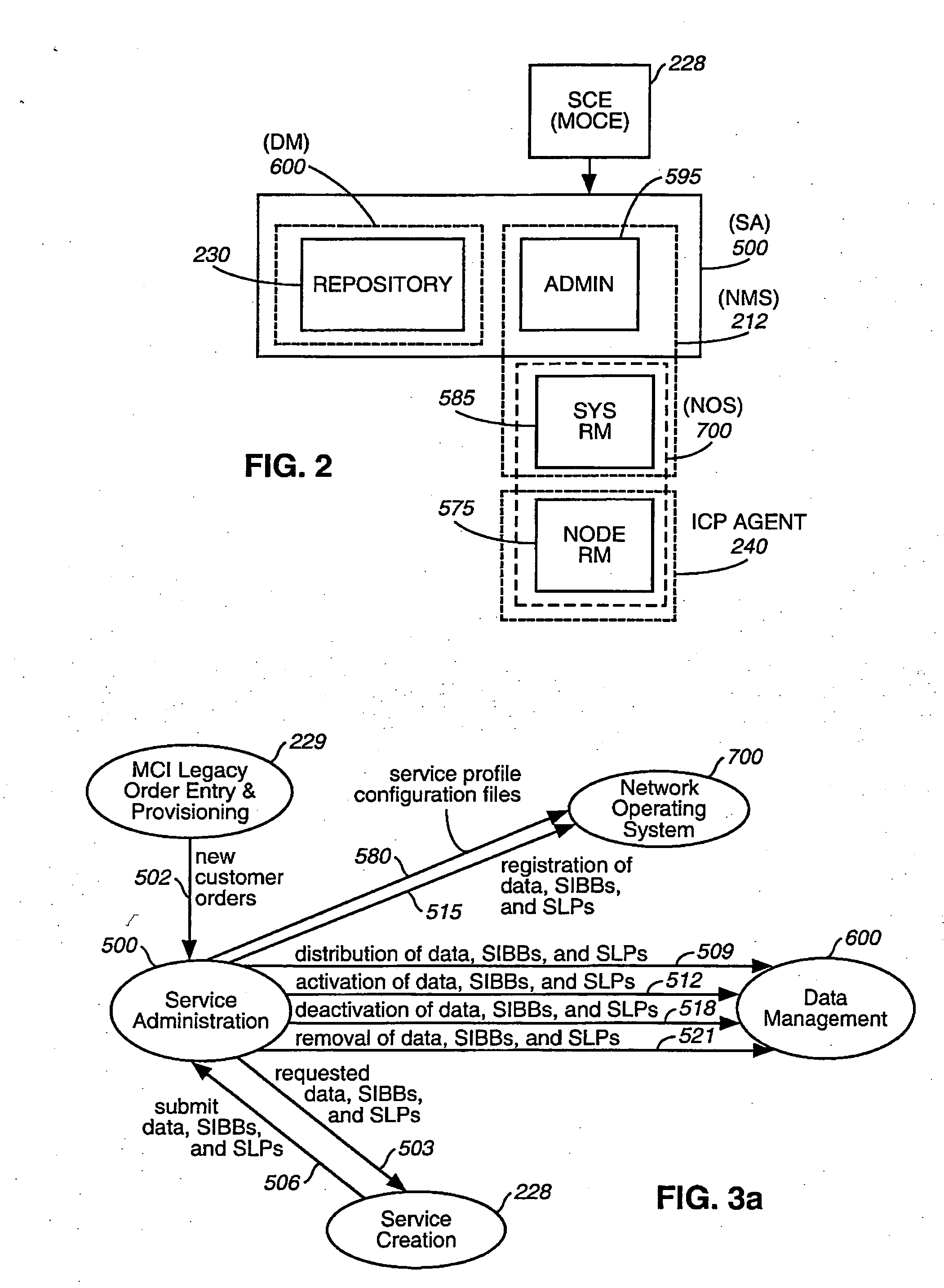Deploying service modules among service nodes distributed in an intelligent network
a service module and intelligent network technology, applied in the field of intelligent network deployment, can solve the problems of long time required to develop, test and deploy new software, increase complexity, and further burden on the switch processor, so as to avoid redundancy
- Summary
- Abstract
- Description
- Claims
- Application Information
AI Technical Summary
Benefits of technology
Problems solved by technology
Method used
Image
Examples
Embodiment Construction
[0041] The present invention is directed to a service administrator that manages the development and deployment of managed objects in the context of a network control architecture that uses such objects. In particular, the service administrator assures the integrity of managed objects and other data needed for network control and service processing. This, in turn, ensures reliable operation of the network even as new services are implemented.
[0042] In the present context, one network control architecture within which the present invention may be embodied is referred to as the Intelligent Distributed Network Architecture / Next-Generation Intelligent Network architecture, or simply designated as the IDNA / NGIN architecture or system. Accordingly, a service processing node may be referred to as an IDNA / NGIN node.
[0043] Now referring to FIG. 1, a telecommunications system employing an intelligent distributed network architecture (IDNA) in accordance with the present invention will be de...
PUM
 Login to View More
Login to View More Abstract
Description
Claims
Application Information
 Login to View More
Login to View More - R&D
- Intellectual Property
- Life Sciences
- Materials
- Tech Scout
- Unparalleled Data Quality
- Higher Quality Content
- 60% Fewer Hallucinations
Browse by: Latest US Patents, China's latest patents, Technical Efficacy Thesaurus, Application Domain, Technology Topic, Popular Technical Reports.
© 2025 PatSnap. All rights reserved.Legal|Privacy policy|Modern Slavery Act Transparency Statement|Sitemap|About US| Contact US: help@patsnap.com



